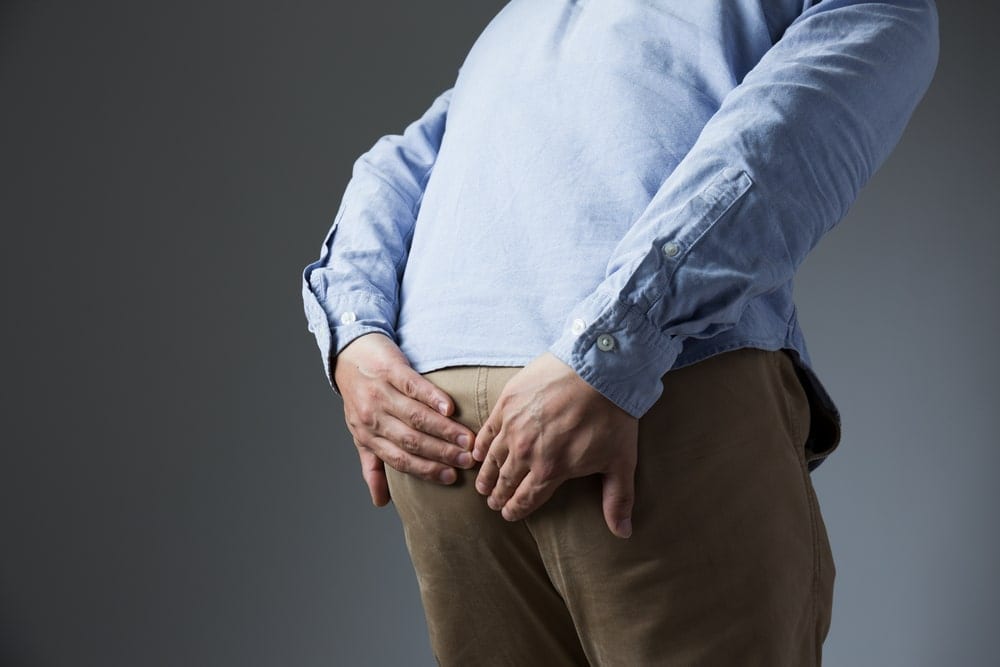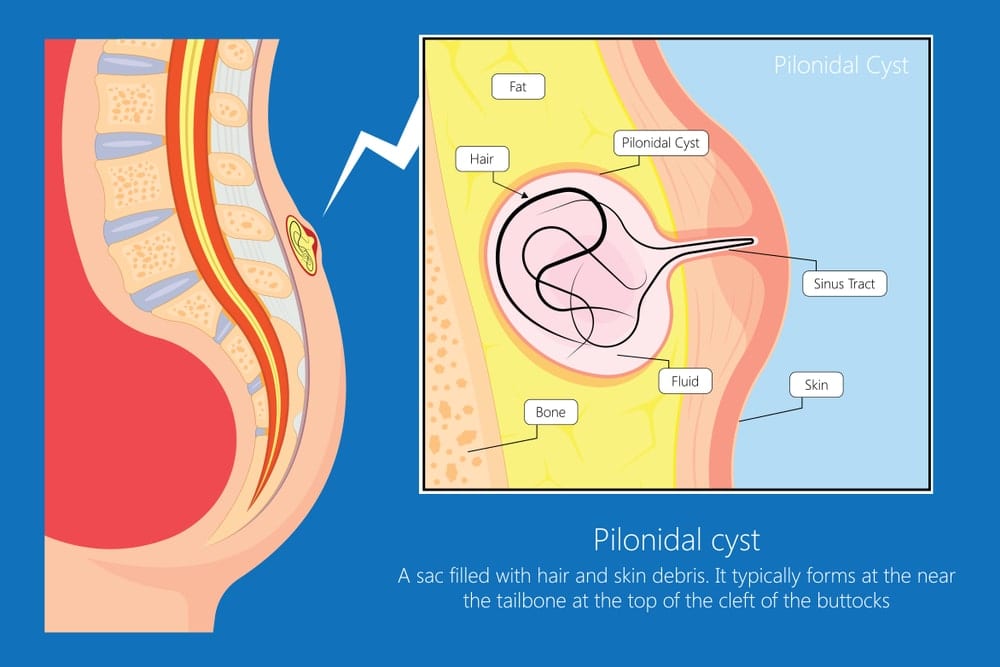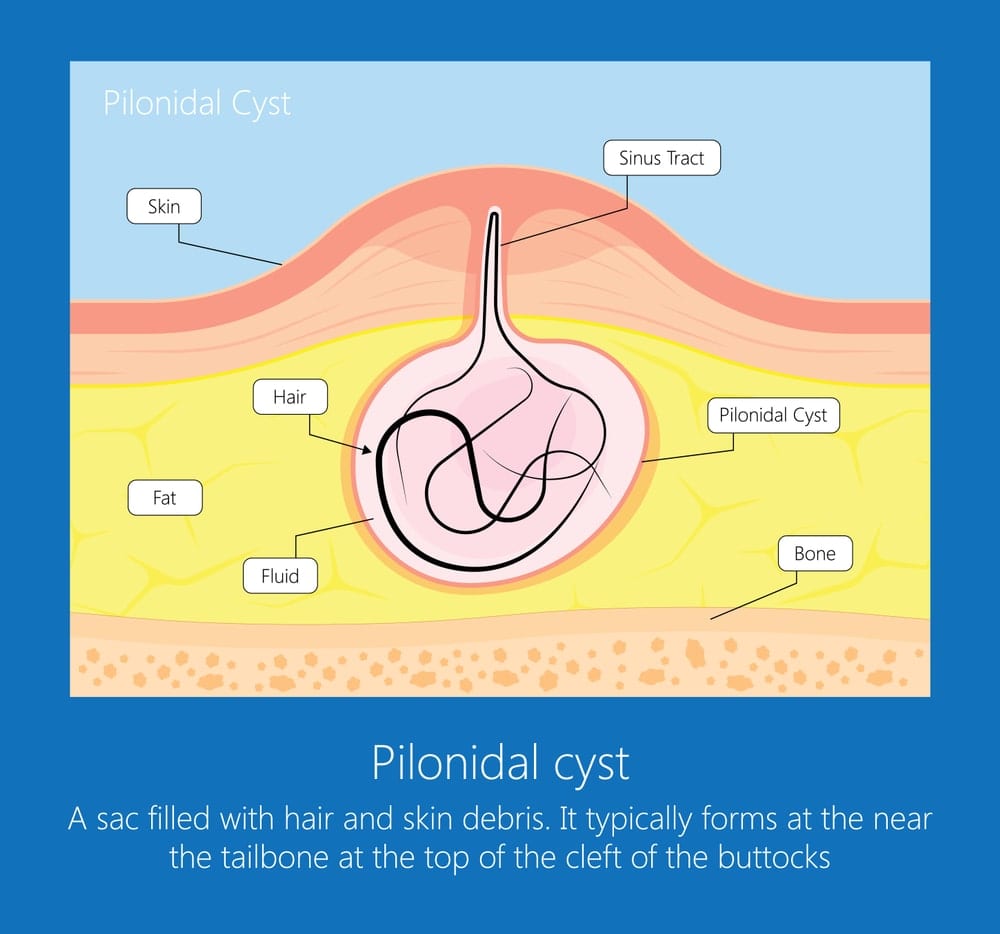Boulder City Pilonidal Cyst Removal
What are Pilonidal Cysts?
A pilonidal cyst is a round fluid-filled sac in the skin tissue. It is usually located around the upper area of the buttocks. A pilonidal cyst can be caused by hair, dirt, or other debris that get stuck in the skin. It can cause severe pain and usually leads to a pus filled abscess due to infection. An infected cyst may ooze pus and blood, and have a foul odor. The cyst can be drained through a small incision or removed surgically to prevent recurrence. Boulder City pilonidal cyst removal specialist Dr. Chanu Dasari is an expert in the treatment and removal of pilonidal cysts. He is an affiliate of Boulder City Hospital, having performed numerous pilonidal cyst removal procedures with exceptional prognosis.
Pilonidal Cyst Signs & Symptoms
A pilonidal cyst may not be noticeable at first other than a small, dimple-like depression on the surface of skin at the tailbone area. When infected, a pilonidal cyst becomes a swollen mass covering a larger painful area around the buttocks and lower back.
Common signs and symptoms of pilonidal cyst include:
- Tenderness to the touch
- Pain when sitting
- Fever
- Redness and sore skin around the area
- Swelling of the tailbone
- Hair protruding from cyst
- Pus or blood draining from the abscess, causing a foul odor
- Formation of pinpoint sinus tract, or holes in the skin
When to Visit a Pilonidal Cyst Removal Specialist in Boulder City?
Pilonidal cysts are a common condition, with more than 70,000 cases reported in the U.S. every year. Without appropriate surgical treatment, it can become an extremely painful and debilitating abscess. Pilonidal cysts are notorious for recurrence. They need to be accurately drained, lanced or surgically removed for prevention of recurrence. It is essential to see a Pilonidal cyst removal specialist if you notice any of the above symptoms to avoid long term complications
Pilonidal Cyst Treatment Options in Boulder City
When a pilonidal cyst is diagnosed by your doctor, it should be treated as soon as possible. Most of the major issues that can occur with a pilonidal cyst can be avoidable at early stages with fast analysis, early diagnosis, and experienced surgical treatment.
Surgical treatment options include:
Incision and drainage – Injecting the surgical spot with a local anesthetic, Dr. Dasari performs a small diamond-shaped cut in the lower back to drain out the hair follicles, dirt, and fluid in the patient. The healing period takes around 3 weeks and the open wound is packed with gauze. Dressing would be needed regularly until the wound is completely healed.
Advantages
- Cyst drained
Disadvantages
- Painful Dressing
- Slower healing process
- Does not recover completely some of the time
Flap Surgery – Flap surgery may be the most effective treatment process for removing the pilonidal cyst and transferring tissue that is healthy to cover the site of the wound. Flap surgery reduces the chance of cyst recurrence and has a much higher rate of wound closure. A challenge of this treatment option is the necessity for larger sutures to remain in place for several weeks. Post-op evaluations are performed in Dr. Dasari’s clinic with minimal discomfort.
Laser Surgery – During this treatment process, a diode laser of 1470nm is used. The laser treatment comprises of the excision of the pilonidal cyst area and can treat the larger and smaller extensions. It involves a small 1cm cut instead of a larger incision or flap. This treatment process works best on medium-sized cysts only. Larger cysts can still risk recurrence, and smaller cysts may have some skin damage.
Advantages
- Quick surgery
Dr. Chanu Dasari— Top Pilonidal Cyst Removal Specialist in Boulder City
As a distinguished pilonidal cyst surgeon, Dr. Dasari is able to quickly identify the distinct signs of pilonidal cysts. Most of the serious complications of pilonidal cyst are preventable at early stages with prompt assessment, early diagnosis, and precise treatment.
Be sure to see an experienced pilonidal cyst specialist near you if you have felt the symptoms. Dr. Dasari is a top Pilonidal cyst specialist in Boulder city, providing exceptional care at his clinic, Minimally Invasive Surgery. Call 702 602-6600 to schedule an appointment today.










